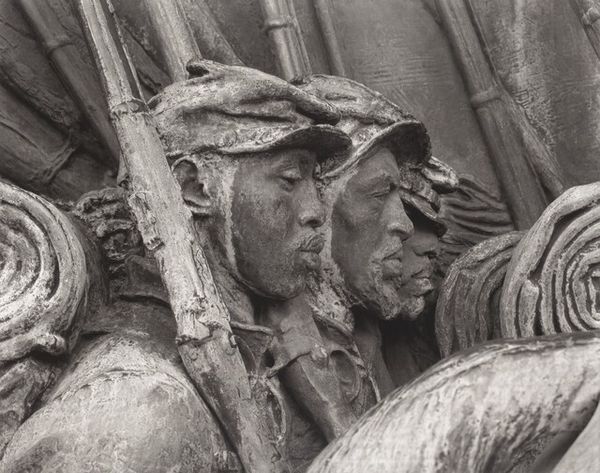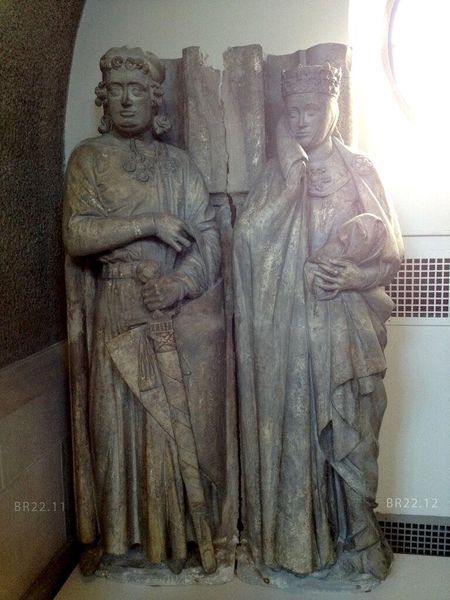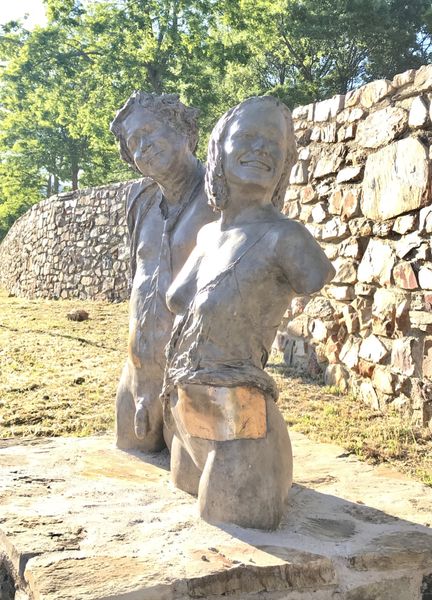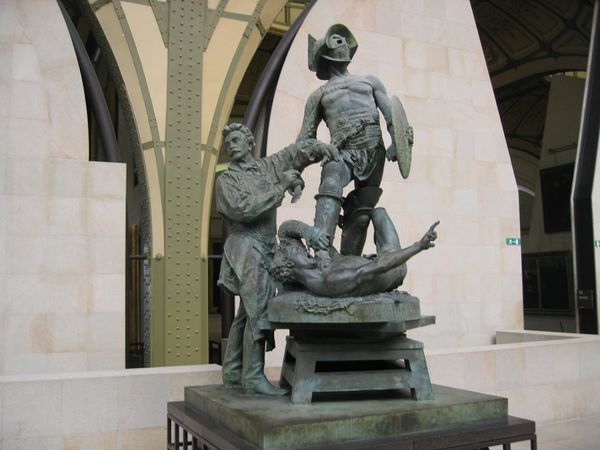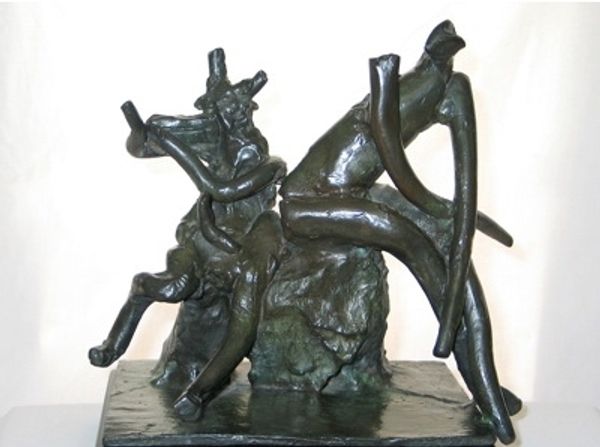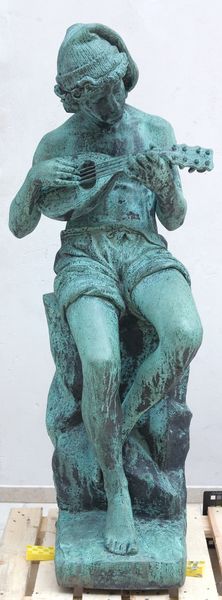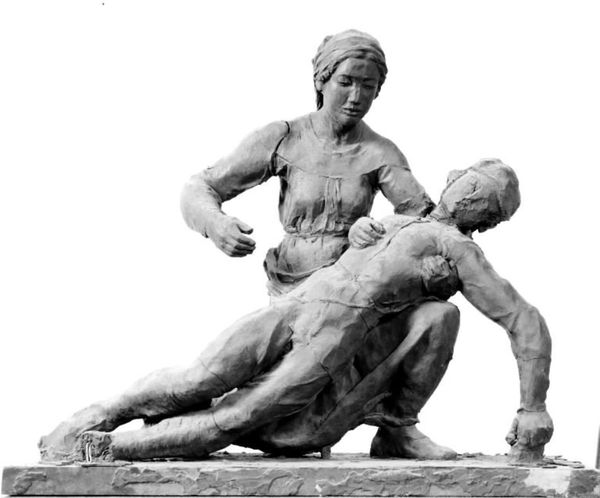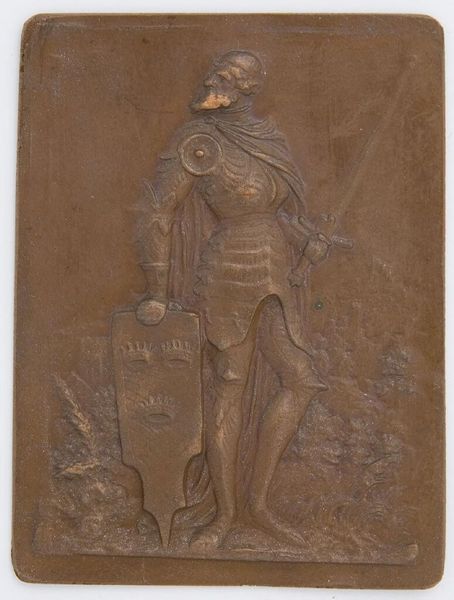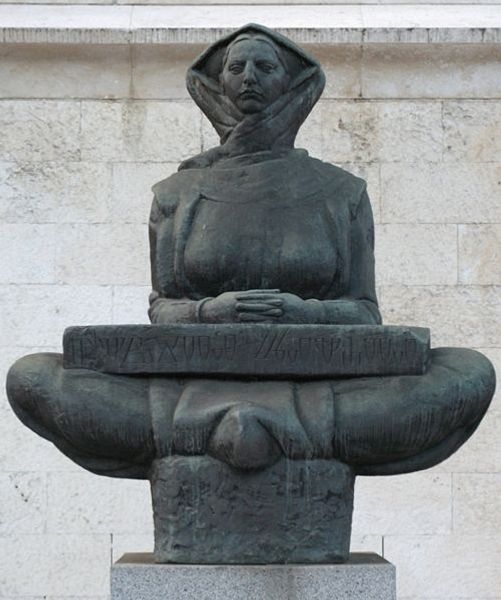
carving, metal, sculpture
#
portrait
#
statue
#
carving
#
metal
#
sculpture
#
sculpture
#
history-painting
#
academic-art
#
statue
Copyright: Public domain
Curator: Today, we’re examining a work entitled "Siegesallee 15 Friedrich I" created around 1900 by Ludwig Manzel. It's a sculpture, most likely carved from stone or perhaps cast in metal. Editor: It strikes me immediately as imposing. The figures are quite solid, projecting an image of power and authority, but there is also a stillness that makes it contemplative. Curator: Absolutely. Looking at the craftsmanship, the attention to detail in the carving of the figures' armor is quite remarkable. We see the labor of academic sculptors combined with industrial processes involved in extracting and transporting heavy material such as stone. The very act of producing such sculptures was a display of Imperial strength and advanced craftsmanship. Editor: Indeed. These figures are adorned in symbols of rank and governance. Their poised expressions reflect a consciousness of their lineage and place in the history of the Hohenzollern dynasty. Curator: It's important to remember the social context of this piece. The Siegesallee, for which this sculpture was commissioned, was a grand boulevard lined with monuments celebrating Prussian rulers. It was, in essence, a material expression of Imperial ambition and a reinforcement of the reigning monarchy’s narrative. Editor: The posture certainly reinforces that. There is something about the almost formalized pose – a hand placed upon a crest that speaks of maintaining inherited honor and command. It's quite assertive. Curator: Considering the era, academic art like this had a purpose beyond mere aesthetics. The sculptures embodied an appeal to nationalism. However, by the time it was created, we begin to see growing resistance to those kinds of monuments due to social tensions. Editor: I can see that tension. These sculptures are embedded within the symbolic grammar of power, they're icons created to inspire reverence. Looking closer, the detail reveals subtle personal choices on behalf of the sitters: the cut of their clothing or arrangement of symbolic items they hold are individual decisions. The statue is both representation and symbolic display. Curator: This brings out that these artworks do not only reflect ideals. They also shape cultural consciousness. It shows how powerful symbols have the agency to solidify social norms, both today and over time. Editor: Precisely. Thinking about it has deepened my perspective, too. It goes beyond a static memorial and reflects on collective memories embedded within it.
Comments
No comments
Be the first to comment and join the conversation on the ultimate creative platform.


